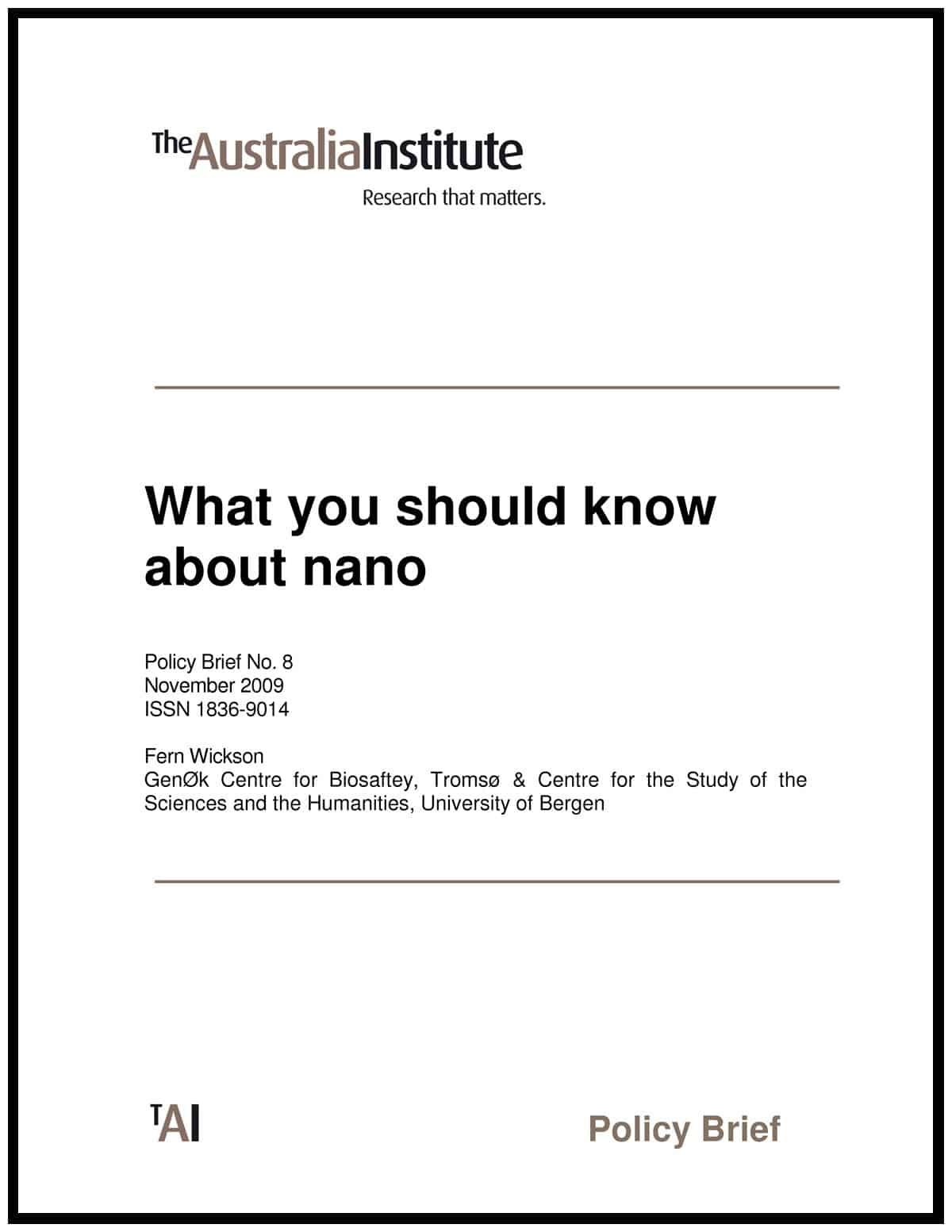Nanotechnology research papers are often very technical and highly unlikely to discuss the occupational health and safety impacts of the technology’s use. The papers often rely on someone else to explain the relevance of the research.
 But on 24 November 2009, Dr Fern Wickson of the University of Bergen spoke in Brisbane about nanotechnology challenges and released a discussion paper entitled “What you should know about nano“.
But on 24 November 2009, Dr Fern Wickson of the University of Bergen spoke in Brisbane about nanotechnology challenges and released a discussion paper entitled “What you should know about nano“.
According to an accompanying media release from The Australia Institute Dr Wickson’s paper included several recommendations:
- Mandatory reporting on all products containing nanotubes and other nanomaterials
- A parliamentary inquiry into nanoST
- Health surveillance and environmental monitoring of high potential exposures
- Adopting a precautionary approach to the commercialisation of the technology in cases where the potential for harm has been demonstrated, significant uncertainties remain and social benefits appear marginal.
The reasons for the recommendations are explained in the paper but the paper is, refreshingly, intended to
“…introduce and engage its audience in the experiment that is nanoscale sciences and technologies, particularly from the perspectives of consumer and environmental protection and occupational health and safety.”
The links and footnotes are excellent sources of original research material including the recently released (but not available online without a fee) paper
Bergamaschi, E (2009). ‘Occupational exposure to nanomaterials: present knowledge and future development’, Nanotoxicology, 3:3, pp. 194–201.
Enrico Bergamaschi’s research paper, according to an abstract, recommends that
“…given the limited amount of information about the health risks associated with occupational exposure to engineered NP, the precautionary principle suggests to take measures to minimize worker exposures. Implementing appropriate engineering controls, using personal protective equipment, establishing safe handling procedures, together to monitor worker’s health, are all strategic elements of a risk management programme at workplace.”
Plenty to read and even more to think on.


 Individually, employees can convince themselves that they are indispensable. The risk, from the workplace safety perspective, is that the individual is not accessing the mental health and stress relief that can come from being away from a workplace for several weeks.
Individually, employees can convince themselves that they are indispensable. The risk, from the workplace safety perspective, is that the individual is not accessing the mental health and stress relief that can come from being away from a workplace for several weeks.


